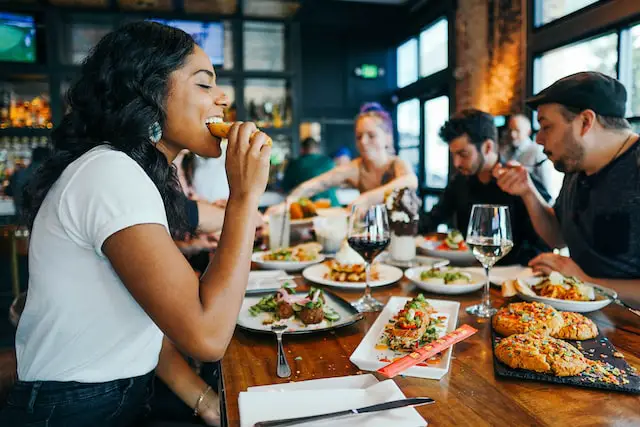A Closer Look at Some Safety Practices in Food and Beverage Service

Every restaurant or other food service business must prioritize food safety above all else. In order to maintain a positive brand image, it is important to take all necessary precautions to ensure that the food you sell is safe for human consumption. It keeps your clients and employees healthy and satisfied by ensuring that you only give the best products possible. Your food is only as safe as the last person who touched it on its long trip from the farm to the consumer’s table.
Quality Control
The competent authorities, as designated by the food control system, manage potential threats to food safety, such as fraud or mislabeling, as well as new or unexpected dangers and emergencies. This includes tasks like inspecting and monitoring food businesses, gathering data that helps shed light on the supply chain and creating plans to deal with food-related crises. For a food and beverage service to be safe from quality control fines, it must ensure combining the checkweigher and metal detector as a measure to pass the quality test that the food and beverage it produces is safe for consumption. To ensure a whole-chain approach from producer to consumer and, if necessary, to adequately address food safety events and emergencies, it is crucial to establish reliable connections to foodborne disease surveillance systems, both upstream to determine the origin of an outbreak and downstream to determine the population at risk.
Avoid Cross Contamination
When potentially dangerous bacteria, allergens, or other microbes move from one object to another without proper disinfection, this is called cross-contamination. The outcomes of this procedure are generally imperceptible to the human eye, but they can be exceedingly harmful or even fatal to consumers who are unaware. It’s not enough to just wash your hands after handling raw meat or raw eggs. For example, you need to use various items for each. Separate raw meat, produce, and cooked foods using colored cutting boards and storage containers. A color coded scheme might aid your workers in remembering which equipment goes with which ingredients. In addition to protecting your customers from becoming sick, following proper food safety standards can assist you in avoiding losing business due to an allergic response.
Sanitizing
Cleaning and sanitizing all work surfaces, utensils, cutting boards, equipment, storage rooms, garbage cans, and floor drains are crucial elements of any food safety routine. In this step, surfaces that come into contact with food are cleaned of any lingering remnants of food, as well as apparent dirt and microscopic microorganisms. Consistent cleaning and disinfection can keep bugs from setting up shop on your surfaces. Salmonella and Listeria are just a couple of pathogens that can be transmitted to human food by pests. Make a cleaning checklist for your restaurant to use as a guide in establishing regular sanitary protocols for the staff to follow. Keep your restaurant clean and free of germs with this restaurant sanitizing procedure:
- Get rid of any garbage or discarded food by scraping the surface.
- Warm soapy water should be used to clean the area.
- Surfaces that have been exposed to chemicals should be rinsed with water and a clean cloth.
- Use a disinfecting wipe or other commercial cleaners to clean the area.
- Stop what you’re doing and let the area air dry.
When it comes to eliminating germs and bacteria on items like silverware, you don’t need any special products, just some heat. It’s recommended that you soak the objects in water at a temperature of 171 degrees Fahrenheit for several seconds. Alternatively, if the item is dishwasher safe, running it through a hot cycle will do the trick too. Moreover, sanitizing chemicals such as chlorine, iodine and quaternary ammonium compounds are commonly used for added safety measures.
Beverage Safety
There should be no afterthought when it comes to beverages. The same level of care should be taken while serving clients’ beverages as is taken when serving food. Cutting boards and knives used to prepare garnishes for drinks, for example, must be cleaned and disinfected before use. Garnishes are not to be prepared at the bar, where germs from customers’ hands could spread, but rather in the kitchen. Garnishes should be stored at 41 degrees Fahrenheit or less; after four hours, they should be thrown away. Sanitizing ice makers and the scoops used to scoop ice is also recommended.
Wash Hands Regularly
To reduce the spread of sickness, servers and other food handlers must wash their hands with soap and running water. Everyone should scrub their palms before AND after working with any edibles; insist that your workers are aware of proper handwashing techniques to further guarantee safe meals. Have your staff adhere to this handwashing protocol to ensure the safety of all restaurant food:
- Please use the hand washing sinks provided.
- Do a full 20-second handwash with soap and warm water.
- Use an uncontaminated paper towel or hand drier to dry your hands.
- To prevent becoming sick from germs, use a paper towel to open the door and turn off the lights.
- After washing your hands to prepare to handle meals, resist the urge to touch your hair and face.
Ensure Employees Health
Employees who come to work sick are a burden to the company in more ways than one. They can spread disease-causing bacteria to the food supply. In no way should you put the health of your employees at risk. Everyone from the head chef to the busboys, from the hostesses to the bartenders to the managers, is part of the service staff. The workplace is not a place for somebody who is ill with a communicable condition like hepatitis A, salmonella, or e. coli. In addition, workers who have cuts or scrapes that can’t be covered by a bandage “or glove” are required to take time off until they have healed. Anyone in the workforce who is ill should stay at home and rest until they feel better.

Successful pest management relies on avoiding problems before they happen. Using pesticides to kill pests, which could compromise food safety, isn’t as crucial as this. Eliminating bugs that are drawn to food scraps, standing water, and lingering aromas is as simple as keeping your home clean and free of clutter. It is also crucial to have professional personnel and pest control services regularly inspect your home. You can spot early warning signs of an infestation and stay one step ahead of the problem this way. Dumpsters, entryways, hallways, the kitchen, and the dining room are all high-traffic areas that need to be checked frequently.





